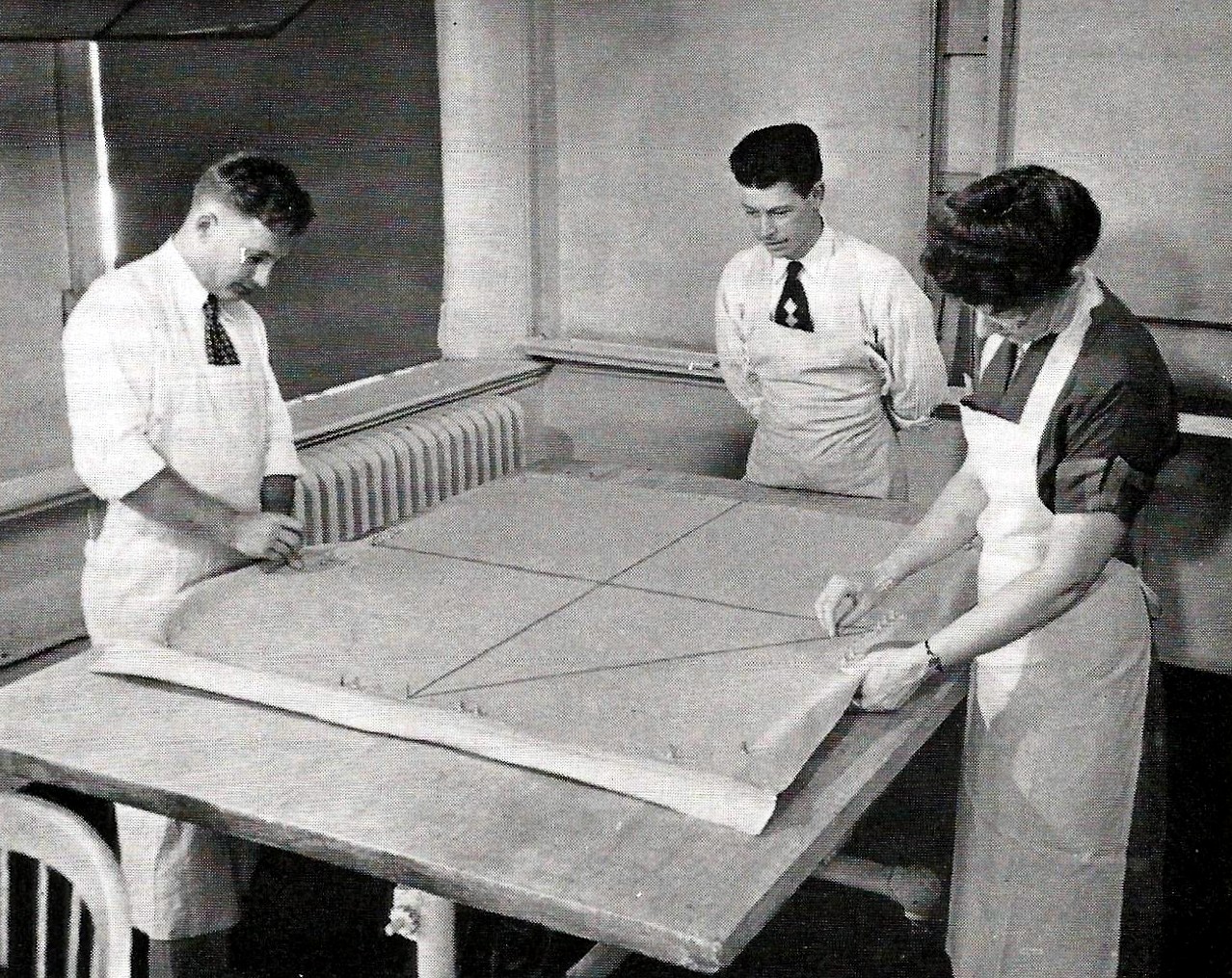Wax resin lining techniques: Edson Motta’s training at the Fogg Conservation Center and its adaptation to the Brazilian reality
DOI:
https://doi.org/10.14568/cp2019015Keywords:
Edson Motta, Fogg Conservation Center, Brazil, Painting conservation, Wax-resin liningAbstract
After Edson Motta’s graduation from the Fogg Conservation Center, his experience contributed to the practice of conservation in Brazil through the introduction of new materials and the technique of wax-resin lining. However, this technique has drawbacks when applied in a country of tropical climate and few resources. It is important, when considering the use of this approach, to be mindful of the conservator’s historical role, which can reveal why this technique was, very likely, the best choice for the conservation of the vast patrimony of canvas paintings in Brazil.
Received: 2019-5-17
Revised: 2020-2-19
Accepted: 2020-2-19
Online: 2020-11-4
Publication: 2021-2-10
Downloads
References
[1] Morais, F., Núcleo Bernardelli: Arte Brasileira nos Anos 30 e 40, Edições Pinakotheke, Rio de Janeiro (1982).
[2] Ancora, A., Uma Breve História dos Salões de Arte. Da Europa ao Brasil, Caligrama Edições, Rio de Janeiro (2005).
[3] Coolidge, J.; Jones, E. H.; Mongan, A.; Stout, G. L.; Sert, J. L., Edward Waldo Forbes, Yankee Visionary, Fogg Art Museum, Harvard University, Cambrige (1971).
[4] Bewer, F., G., A Laboratory for Art. Harvard’s Fogg Museum and the Emergence of Conservation in America, 1900-1950, Harvard Art Museum, Yale University Press, Cambridge, Massachusetts (2010).
[5] Oudheusden, S. ‘The procedure of wax-resin linings by the painting restorers Johannes Albertus Hesterman (1848-1916) and sons’, CeROArt EGG4 (2014), https://doi.org/10.4000/ceroart.4081.
[6] Rushfield, R.; Stoner, J. H. (eds.), Conservation of easel paintings, Routledge Series in Conservation and Museology, Routledge, New York (2012).
[7] Duijn, E.; Marvelde, M. ‘The art of conservation VII: Hopman and De Wild: the historical importance of two Dutch families of restorers’, Burlington Magazine 158(1363) (2016) 812-823.
[8] Stout, G. L.; Gettens, R.J., ‘The problem of lining adhesives for paintings’. Technical Studies in the Field of Fine Arts 2(2) (1933-1934) 81-104.
[9] Bradley, M. C., JR., ‘The Treatment of Pictures’, Art Technology, Cambridge (1950).
[10] Rescala, J. J., Restauração de Obras de Arte, Pintura–Imaginaria–Obras de talha, Centro Editorial e Didático da UFBA, Salvador (1985).
[11] Motta, E., Restauração de Pinturas em Descolamento, Publicações do Instituto do Patrimônio Histórico e Artístico Nacional, no. 23, Rio de Janeiro (1969) 13-15.
[12] Mayumi, R..; Jorente, M. J., ‘A Industria Têxtil no Brasil: uma perspectiva histórica e cultural’, ModaPalavra e-Periódico 8(15) (2015) 161, https://www.revistas.udesc.br/index.php/
modapalavra/article/view/5893.
[13] Arquivo IPHAN (Instituto do Patrimonio Histórico e Artístico Nacional), CRBC, caixa no. 08, PT 02, Env.01, Rio de Janeiro (consulta em 01-11-2017).
[14] Arquivo IPHAN (Instituto do Patrimonio Histórico e Artístico Nacional), CRBC, caixa no. 03, PT 01, Env.01, Rio de Janeiro (consulta em 16-10-2017).
[15] Arquivo IPHAN (Instituto do Patrimonio Histórico e Artístico Nacional, CRBC, caixa no.04, PT 03, Env.02, Rio de Janeiro (consulta em 16-10-2017).
[16] Motta, E., Restaurações de Obras de Arte 1967-1969, Descrição de Técnicas Adotadas, Publicação do Ministério da Educação e Cultura, Museu Nacional de Belas Artes, Rio de Janeiro (1969).
[17] Pignatti, G., ‘The Genesis of Modern Conservation–the Florence Flood Revisited’, Interview with Ezio Buzzegoli ACR Florence December 2016, ICON News, The Institute of Conservation (2017), https://icon.org.uk/search/node/news%202017 (acesso em 2020-01-07).
[18] Bergeon, S., Science et patience, ou la resturation des peintures, Editions de la Reunion des Musees Nationaux, Paris (1990).

Downloads
Published
How to Cite
Issue
Section
Categories
License
This work is distributed under a Creative Commons Attribution License (CC BY-NC-ND 4.0) which permits use, distribution, and reproduction in any medium following no commercial or derivatives, provided the original author and source are credited.
Copyright remains with the authors.






